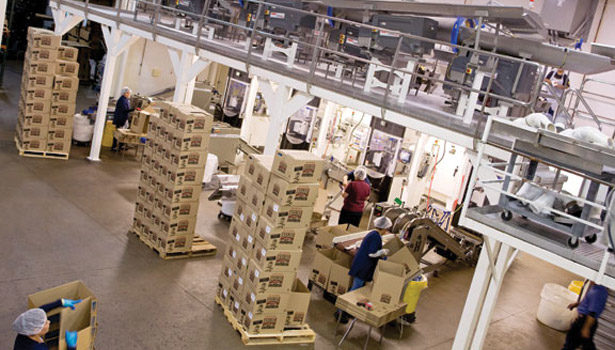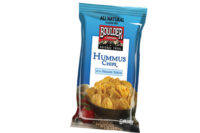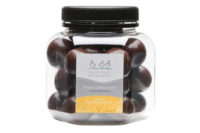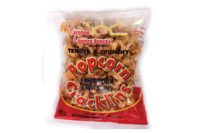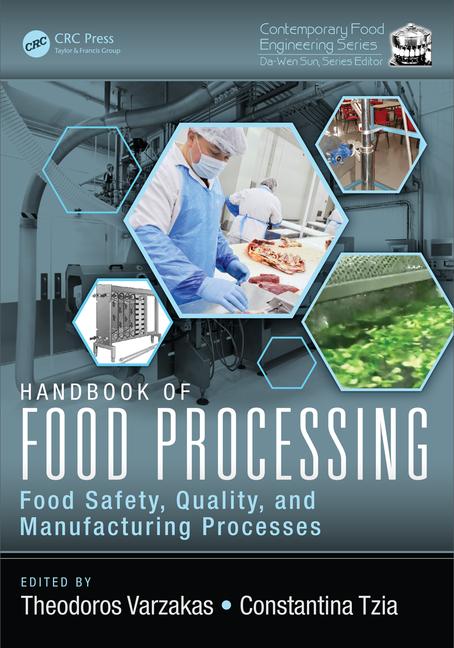When it comes to baked goods and snack food manufacturing, the goal has always been to top out speed and efficiency without sacrificing quality.
In the past five years, however, growing concerns about product safety and emphasis on the revised ANSI Z50.2 standard—not to mention the new food safety guidelines—have shifted the focus to sanitation and cleanability. As a result, bakers and snack food producers are now also looking for conveyors and belts that are more cost-effective to clean, durable and that reduce long-term maintenance costs.
“Processors want safe, fast and accurate conveyors that are easy to clean and provide long-term reliability,” affirms Blake Svejkovsky, manager of product handling systems for Heat and Control Inc., Hayward, Calif. “Specifically, they are seeking sanitary designs without pinch points or sharp edges and the ability to convey high capacities without product damage. They want precise proportional distribution and granular feeding and space-efficient designs without a plethora of parts requiring routine maintenance.”
The new and innovative
The latest conveyor and belt systems are designed with these objectives in mind.
Last December, Wire Mesh Products, York, Pa., launched a 12-ft.-wide baking belt with advanced crimp technology that provides for precise belt tracking. The company also introduced a chain-driven belt over the summer that uses rivets and tubing instead of solid through-rods to reduce weight. Also, for low-temperature applications, Wire Mesh’s new 10-ft.-plus-long, positive-drive, segmented pinroll system provides minimal product marking with the use of a tightly balanced weave mesh.
“The balanced weave friction- and chain-driven belts and pin-roll-balanced, weave-driven belts [are our best sellers],” says Richard D. Riva II, president of Wire Mesh Products. “There has been a move away from pinroll-driven belts on wide and/or high-temperature applications to friction-driven belts installed with the appropriate tracking system in place. The overall cost, maintenance headaches, shorter belt life and equipment downtime that can be associated with a pinroll-driven system are the reasons behind the push.”
Additionally, pinroll applications that reach elevated temperatures may cause thermal expansion issues, which create a mismatch between pinroll teeth and mesh.
Durability is a key component that manufacturers seek with conveyors and belt systems. In early 2012, Ashworth Brothers Inc., Winchester, Va., released the Fatigue Resistant Cleatrac System, made of a stainless steel material for increased strength in tunnel freezers, tunnel ovens, transfer and straight-run cooling applications.
“The balance-weave wire mesh design makes it resistant to damaging abrasives such as salts and breading,” says Terry Kent, Ashworth’s marketing communications specialist.
Last September, Ashworth introduced its ¾-in.-pitch Small Radius Omni-Pro belt to extend its Omni-Pro line of spiral and turn-curve conveyor belts. This line is available in pitches ranging from ¾ to 1½ in. A new 360-deg., buttonless weld technology uses a zero-tension design for a higher load-bearing capacity.
Recently, Harahan, La.-based Intralox, LLC introduced the S550, which can handle ¼-in. nosebars. “This [system] accommodates very small product with tight transfers,” says Dana Emberland, Intralox’s bakery team product manager. “Additionally, we introduced our Series 409X group of belts in 3¼-in. widths to serve as a much more robust replacement for thin-winged tabletop belts. This reduces the amount of wing breakage and associated downtime/maintenance with other belts.”
Cambridge Engineered Solutions’ new Duraflex belt can serve as an alternative to open two-dimensional belts and is a replacement for flex-style belting. “In the bakery and snack market, Duraflex is used on cooling conveyors for items like tortilla chips,” says Kelly Hayden, director, national accounts and business development for the Cambridge, Md.-based company. “It also hangs over infeeds and exits from ovens.”
Heat and Control recently introduced the WeighBack conveyor, which combines direct loadcell weight measurement with gentle horizontal motion conveying. Its use is for inline product weighing and with seasoning applicators. The new FastBack product-blending conveyor system is geared for accurate loadcell weighing.
“For trail mix and snack party mixes, cereals, baked products and frozen prepared foods, this system can blend up to 10 products with accuracy better than 1.5% per constituent,” says Svejkovsky.
Keeping clean
Five years ago, sanitation issues drove customers to ask equipment suppliers for features that make conveyors easier to clean.
“This was mostly driven by the labor hours required to clean conveyors,” says Ray Cassingham, who handles sales for Auburn, Wash.-based KESS Industries. “Today, these same customers are looking at the risk of a product recall and the labor to clean the equipment.”
Dynamic Conveyor Corp., Muskegon, Mich., recently introduced DynaClean, a line of conveyors for the food processing industry. “It’s quick and easy to disassemble, clean and sanitize,” says Jill Batka, president of the company.
Berndorf Belt Technology USA, Elgin, Ill., is currently developing a self-cleaning surface with upgraded release properties for oven baking belts. The company expects to launch the surface in 2013. “We think this coating will solve a lot of problems for those bakers who face problems with dirt buildup on the belts and who have to clean their belts frequently,” says Daniela Weiszhar, Berndorf Belt’s marketing manager. “The new surface/coating will be sold under the name berncoat.”
Although Triple/S Dynamics in Dallas hasn’t introduced any new lines over the last year, the company has added sanitary enhancements to its existing conveyor systems. “We now offer a redesigned slide gate, which is used on horizontal-motion conveyors and facilitates easier cleaning,” says Tim Talberg, sales engineer for the company. “Instead of the fixed T-bar, there’s now a gate assembly that can be taken completely apart.”
The company’s Slip Stick horizontal-motion conveyor is its strongest selling line for snack food manufacturers. The system’s slow-forward, quick-return motion is designed to keep seasoning on products.
Wire Belt Co. of America, Londonderry, N.H., introduced its Versalink belt last winter for the snack food industry. The light-duty, miniature, flat-wire belt offers the same support and carrying surface as conventional systems, but absorbs less heat in the fryer and gives less carry out of oil.
“Our Compact Grid line, which is a small matrix mesh of 10-in. squares, is relatively new, and replaces balance weave belts in a number of applications,” says Rick Spiak, vice president of sales and marketing at Wire Belt Co. “It provides excellent product support for smaller items, like crackers and cookies.”
There has been much innovation for production systems to handle more delicate items with the goal to improve product quality during the manufacturing process. Key Technology’s Horizon horizontal-motion conveyor is designed for more fragile snack applications. “Products with coatings or seasonings will move more gently on this system,” says John Kadinger, marketing manager for the Walla Walla, Wash.-based company.
Key’s Iso-Flo conveyor line can be used to move bulk products, ingredients or wet products. A new motor mount enables a pair of vibratory motors to impart synchronized reciprocal vibratory motion to the conveyor bed, which maximizes the conveyor’s efficiency and reliability while minimizing maintenance.
What’s next?
Looking ahead, conveyor and belt technology is expected to continue evolving based on manufacturers’ needs.
“The next wave of belts will be less standardized and more customized to the ever-growing variety of products and shapes being produced,” Riva says.
Belting is expected to be thinner, but still retain stability and strength characteristics, which allow for smaller transfer points. “The smaller transfer point will give better product orientation and/or less breakage during production,” Cassingham says.
Intralox is introducing technologies for bakery product production, including the iDrive to provide nearly limitless conveyor lengths with no transfers; ThermoDrive, which offers low-tension, positive-drive flat belts to address sanitation concerns; Activated Roller Belts that replace typical slat switches; and Direct Drive Spiral technology that can extend production time by eliminating spiral issues, such as constant sanitation cycles, high tension concerns and overdrive setting issues.
The companies say more energy-efficient and greener conveyor and belt lines also are expected to launch in the coming years. These new developments will provide more efficient production, higher quality products and enhanced sanitary conditions.



